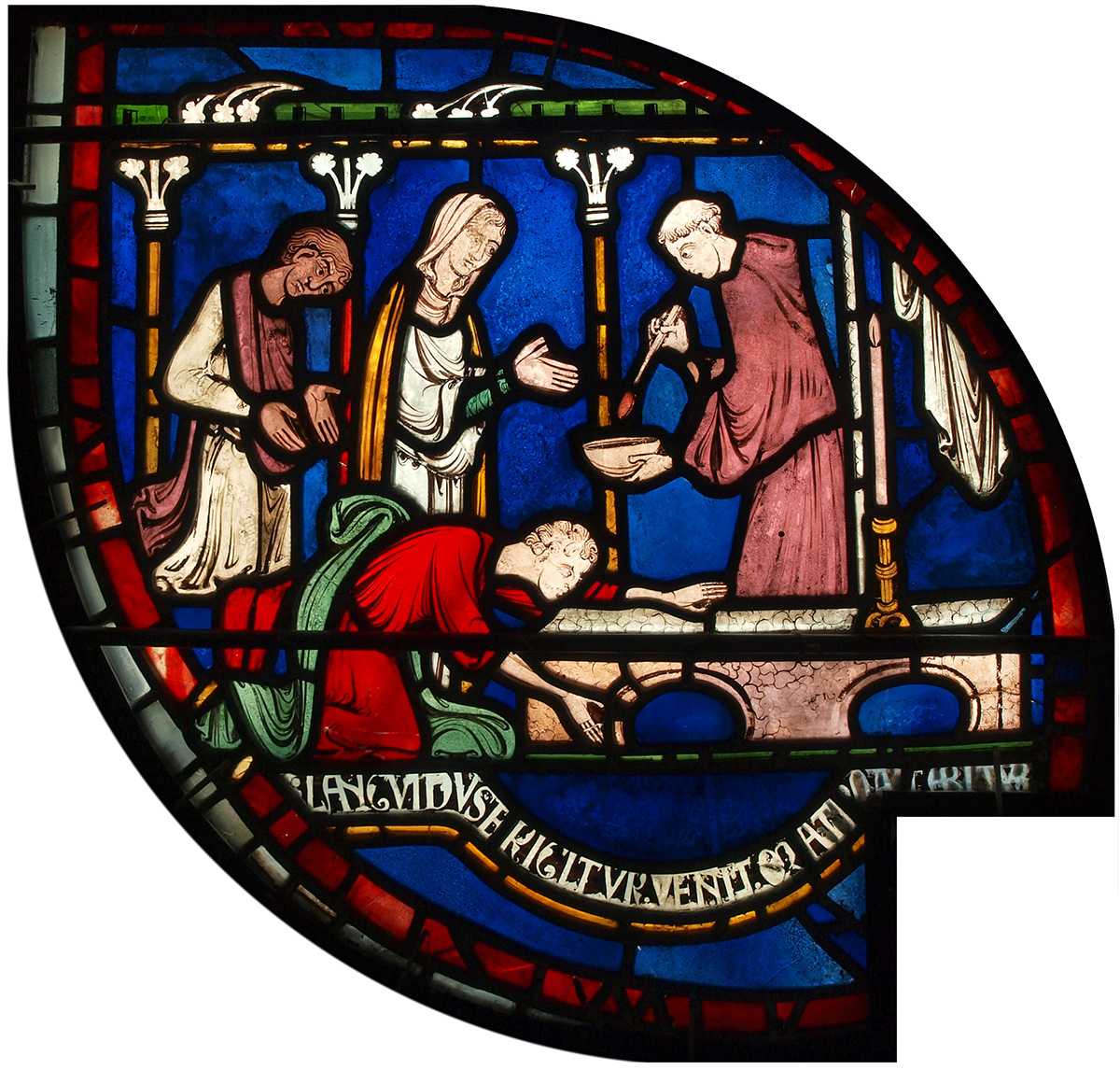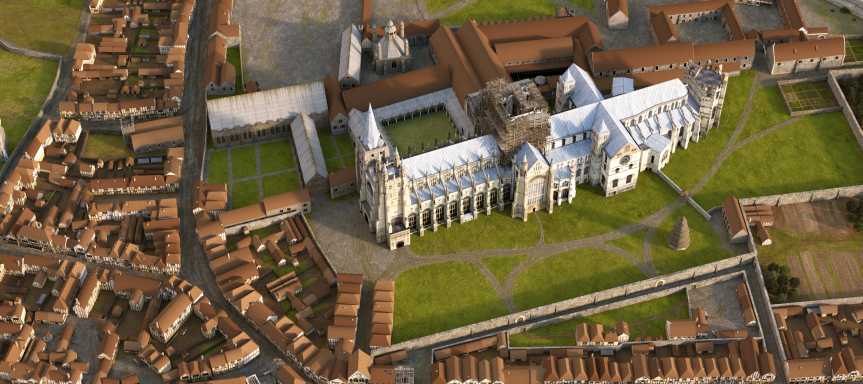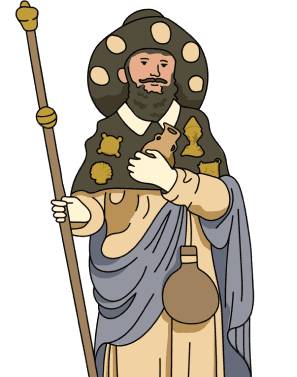Pilgrimage activity sheets
Click here to find a programme of curriculum linked classroom activities and resources to support the ‘Pilgrimage’ resource.
Download activity sheetsAfter Archbishop Thomas Becket argued with King Henry II over the division of power between the King and the Church he was killed by four of Henry’s knights whilst in the Cathedral. When miracles began to occur at the place Becket was killed, he was made a saint. The remains of martyrs like Saint Thomas were supposed to have special healing powers, and so thousands of pilgrims flocked to Canterbury. Holes and prayer niches were often made in the side of the saint’s tomb or shrine so pilgrims could get closer to their remains of the saint. After 50 years, a magnificent shrine was built to house his bones which were translated (moved) from his tomb in the Eastern Crypt.
Another important part of the pilgrimage was the giving of an offering as thanks or in the hope of their prayers being answered. This offering would often be a silver coin, a candle or wax image symbolising the reason for the pilgrimage (for example they might offer a wax leg if they were hoping to have a sore, injured or diseased limb cured).
The great number of offerings at popular shrines meant that some pilgrimage sites (such as the shrine of St Thomas in Canterbury) became very wealthy and the shrines themselves became a wonderful sight covered in huge amounts of precious stones and metals. As such, many pilgrims came to see the shrine itself as a tourist attraction as well as the connection it had to the saint.
The red box below includes an original source which describes the experience of pilgrims arriving at the Cathedral on December 29th. This date was the Feast of the Martyrdom, the anniversary of the day that Saint Thomas Becket was killed.
The shrine-keepers open the doors to the people who have kept a devoted watch throughout the night and let them enter. Many of them arrive with great devotion, eager to hear the life and works of the glorious martyr Thomas which are usually read in the mother tongue, and they store them up in their attentive minds and pious hearts. This having finished, the two clerks serve the people, who may be wearied by toil, drawing them to the heat of the fire that they have prepared, soothing them, and serving them sufficient bread, cheese, and ale… after Mass at the Martyrdom has finished and Mass at the Tomb of St Thomas is almost over, the shrine-keepers make it known to the people that a third Mass is celebrated in the shrine.Customary of the Shrine of St Thomas, 1428
From the twelfth century pilgrims were distinctively dressed in simple clothes.
Men wore a long tunic called a sclavein and carried a wooden staff and women wore clothes typical for a country dweller. Later some pilgrims wore a broad brimmed hat which could be decorated with badges that the pilgrims collected as souvenirs from the holy places they visited.
Pilgrim badges were often sold at holy sites, they provided a source of income and stopped pilgrims breaking off and stealing bits of the shrine as souvenirs. They also helped to advertise the shrine of the saint and gave the pilgrim proof they had visited it. The pilgrim badge itself was also considered holy – it was a ‘secondary relic’ – and could give the protection of the saint associated with that holy place to the wearer.
As well as badges, pilgrims also acquired small flasks called ampullae which could be filled with ‘St Thomas’ water (initially said to be water mixed with an essence of Saint Thomas’ blood). These were sold to pilgrims visiting Canterbury Cathedral until 1538 when the shrine was destroyed.
The place Becket was murdered.
The original burial place of Becket from 1170 - 1220.
The site of the shrine built for Becket and completed in 1220. It was destroyed by Henry VIII as part of his reforms of the Church in England in 1538.
Medieval stained glass windows that show the stories of the miracles associated with Saint Thomas, as written down by two monks from the Cathedral’s monastery.
Click here to find a programme of curriculum linked classroom activities and resources to support the ‘Pilgrimage’ resource.
Download activity sheets© Dean and Chapter of Canterbury Cathedral



